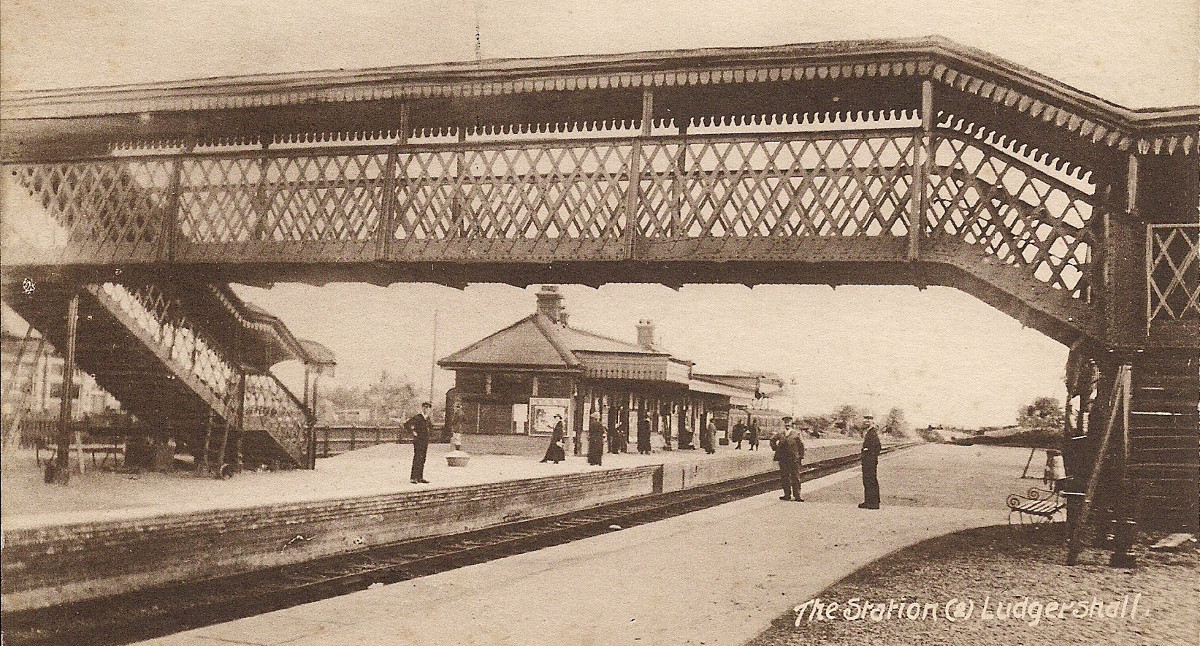The Logic
Reactivation of the line to Ludgershall would provide superior connections to the major population centres for communities along the reopened line with growth in housing to reduce pressure on Andover. It would also reduce traffic pressure on the area’s roads.
As the track is still in situ and in working condition as far as Ludgershall the main investment would be rebuilding station facilities at Ludgershall and Weyhill. An extra line could be connected at Andover to return the station to through-working with three platforms.
Background
Ludgershall had
a station on the Swindon, Marlborough & Andover Railway which was opened in
1882. By 1894 the operator was the Midland & South Western Junction
Railway, providing services between Cheltenham and Southampton. A branch from
Ludgershall was built to serve Tidworth Camp in 1901 and was opened to public
traffic in 1902. In 1943 a short spur was added to serve the military depot at
Ludgershall, to the south of the main road.
The Midland
& South Western Junction Railway spent some of its early life in Chancery
(i.e. bankrupt) and relied heavily on military traffic over a route that, apart
from Swindon, was mostly rural. The passenger service to Tidworth was withdrawn
in 1955 when the line passed to the War Department, until fully closing in
1963.
The Midland
& South Western Junction Railway and Ludgershall station closed in 1961
along with the northern section of the line to Swindon, followed by the branch
to Tidworth in 1963. The spur at Ludgershall and the southern section to
Andover remain open to allow the British Army to transport tanks and other
equipment to and from the depot and onwards to the Salisbury Plain training
area.
Interestingly
the demise of the railway came BEFORE the infamous Beeching report.
Evolution Since
While
Ludgershall and Weyhill have remained largely undeveloped for decades, Tidworth
has been a subject of massive expansion in recent years and now has become a
sizeable town. In a sort of Catch-22 situation the poor connections of Weyhill
and Ludgershall and the absence of a planning policy by Test Valley Borough
Council in respect of Weyhill have meant that the areas have not been
targeted as satellite growth areas for the currently over-stretched Andover.
Weyhill
and Ludgershall are obvious candidates for growth in the case that a rail
connection is reopened to service them. Weyhill in particular could be developed as a satellite community to Andover.
Population Growth
Tidworth
Community Area at mid-year 2011, had an estimated total population of 20,370
persons making it the 12th most populous community area in Wiltshire. Over the
period Census 2001 to mid-year 2011 , Tidworth Community Area’s population
growth was 31.5% (4,880 persons), significantly higher than the Wiltshire
average of 9.6% (41,350 persons), and the highest of all Wiltshire’s community
areas.
Ludgershall’s
population at the time of the 2001 census was 3,775, which then grew to 4,427
by the time of the 2011 census. Two new housing developments could add several
thousand more residents in the immediate future. Moreover with a terminus at
Ludgershall, a reopened branch line would have all of the Tidworth population
within a three mile radius of the Ludgershall station.
Service
Proposed
The service
proposed for the Red Posts-Ludgershall branch would be diesel and three-car. Currently services run from Salisbury
to London (via) Basingstoke every half hour. One of the trains per hour is
“long-distance” (originating from West of Salisbury) and runs express from
Andover to Basingstoke, while the services originating in Salisbury alternate
and stop at Whitchurch and Overton.
The two-sided northern platform of
Andover station would be reconnected to the main-line in the eastbound
direction to provide a passing loop for fast trains on the existing line and
stopping trains on the new service.
The proposed running would be that
all mainline trains run express Andover to Basingstoke, while additional hourly
services originating at Ludgershall and terminating at Basingstoke would originate
at Ludgershall stopping at Weyhill, Andover, Whitchurch and Overton.
Alternately, the service could be operated by an entirely different operator to the existing mainline operator and a service could run Reading, through Basingstoke and Andover to Ludgershall.
Advantages
- Ø
Existing track to Ludgershall
in good condition with operating infrastructure (signaling, points etc.) in
place
- Ø
Available platform at Andover
- Ø
A diesel shuttle between
Basingstoke and Ludgershall addresses the stopping train issue in service
enhancements for commuters wanting faster services (with fewer stops) to
Andover, Salisbury and beyond
- Ø
Weyhill and Ludgershall could
be developed as satellite communities (Weyhill as a New Model Town)
- Ø
Reduced road traffic
- Ø
Low capital expenditure
involved (less then GBP 4 mn)
Disadvantages
- Ø
Service would only be diesel at
beginning (upgradeable later)
- Ø
Initial passenger numbers at
Weyhill would be low (possibly prompting
a later station opening coordinated with significant development)
Conclusion
Rail operators find themselves in a chicken-and-egg situation with
regard to development of communities. Communities like
Ludgershall and Weyhill cannot be developed because of lack of infrastructure
and then argue against the reinstatement of railway services on the basis of
lack of population to justify reopening. In reality good planning has
development and infrastructure moving in tandem, not with transport trailing
far behind development and population growth. A population of over 20,000 lives
within a 4 km radius of the proposed station.
The original logic for closing
scantly-used rail services in tiny communities was difficult to argue against.
Now Andover has become the fringe of London’s commuter belt, and arguably
Salisbury is also. Using that logic the towns along the former Ludgershall
branch are the next for inclusion into this trend, and even if they are not,
then the proposed rail connection is merited in view of the growth of Andover
and Basingstoke as regional employment and service hubs.
In an age of “too difficult” being
used as a reason for inaction, the reinstatement of this rail link borders on
falling into the “too easy” category.






